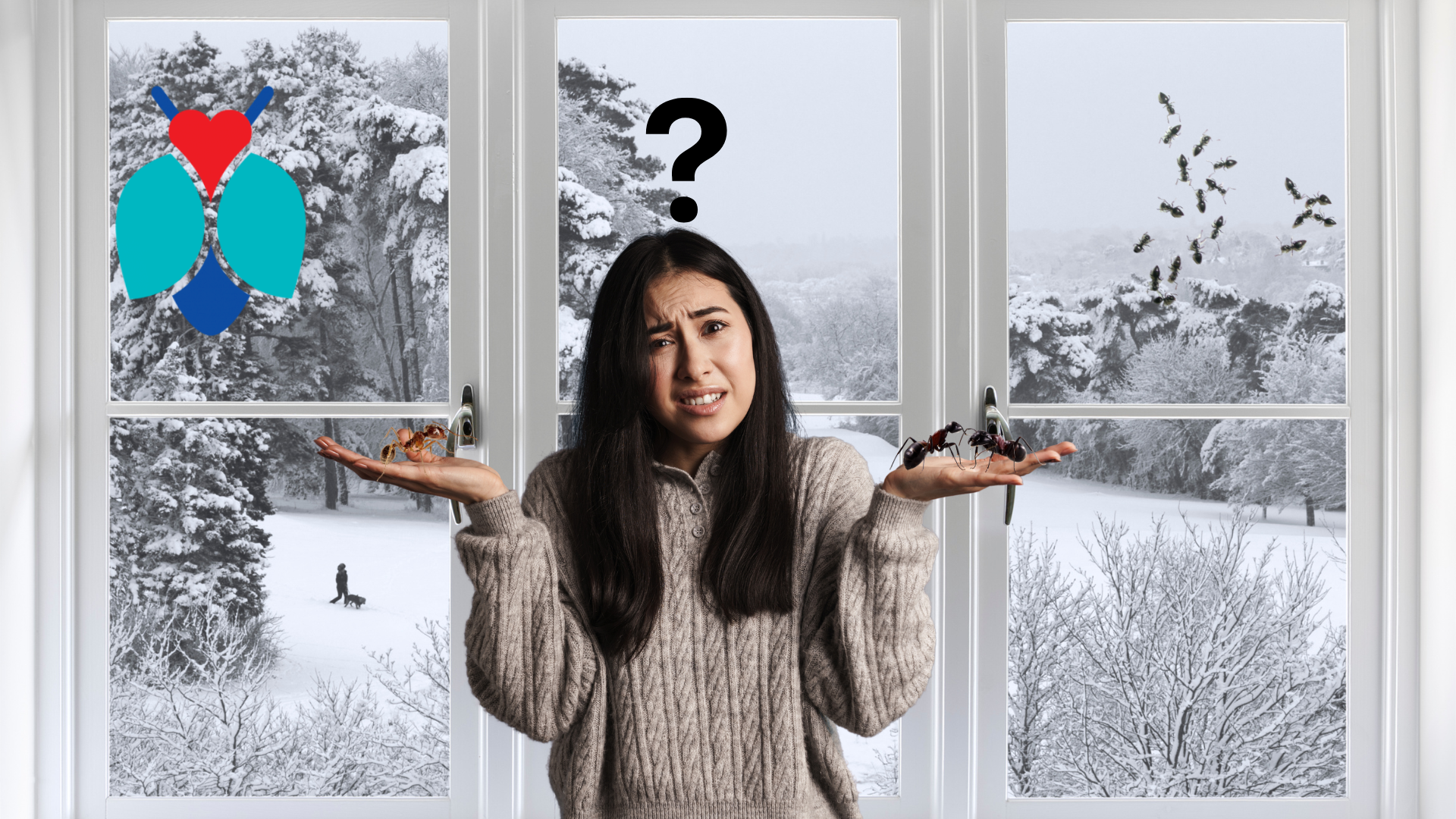Share This Blog!
During the winter time, almost all insects are either dormant or freeze to death. But there is one insect that is capable of thriving all winter long. That insect is an ant. Ants are very common to see inside homes in the middle of winter. The two most common are carpenter ants and pavement ants.
Pavement ants vary in color between brown and brownish-black. They get their name from where they build their nests. Pavement ant nests that are outside are found under sidewalks, driveways, patios, and roads. Their nests are easily definable by their circular piles of sand.
Pavement ants in the winter build their nests in different locations. These locations include under heated floors, tile floors, cement slabs, and insulated foundations. When you see ants inside these ants are only the foraging ants of the colony. The foragers only make up 10% of the entire colony. The rest of the colony stays hidden under the floor, cement slabs, or foundations. The foraging ants can become more active during warmer days in the winter.
Carpenter ants are another ant that can be seen inside in the winter. These ants are slightly larger than pavement ants. Their colors can vary between all black or red and black. Carpenter ants build their nests inside water-damaged or rotting wood. When outside their nests can be located inside trees, tree stumps, wooden play sets, wood piles, and wooden decks. In the winter any nest located outside goes dormant and the colony hibernates until spring.
Carpenter colonies that are inside a home or building can stay active all winter. These nests are often built due to there being a water leak somewhere inside the structure. This could be due to an old roof where the snow melt leaks into the attic, or a leak inside a bathroom, kitchen, laundry room, or furnace room. These ants do not eat wood like termites but use the soft wood to chew small tunnels and galleries. The ants that are visible to the homeowner only make up 10% of the entire colony. The rest live inside the wood including the eggs and queen.
If you are unsure if you are dealing with pavement ants or carpenter ants look for piles of sand or frass. Sand would indicate a pavement ant infestation. If you are seeing piles of sawdust or frass you have a carpenter ant infestation. You can also visit our ant identification page for detailed pictures and descriptions.
It’s important to first call a professional when dealing with ants inside. Many products in the market only kill the ants that are visible to the homeowners. They do not affect the 90% of the colony that is hidden behind the walls or floors. By using products like these the ant colony inside will believe they’re under threat and send more foraging ants to offset the ones that did not return. This can make the ant problem much worse than it was before!
If you have any questions or concerns or would like to schedule an appointment call us or send us an email
Call Us Today! 952-404-BOGO (2646)




